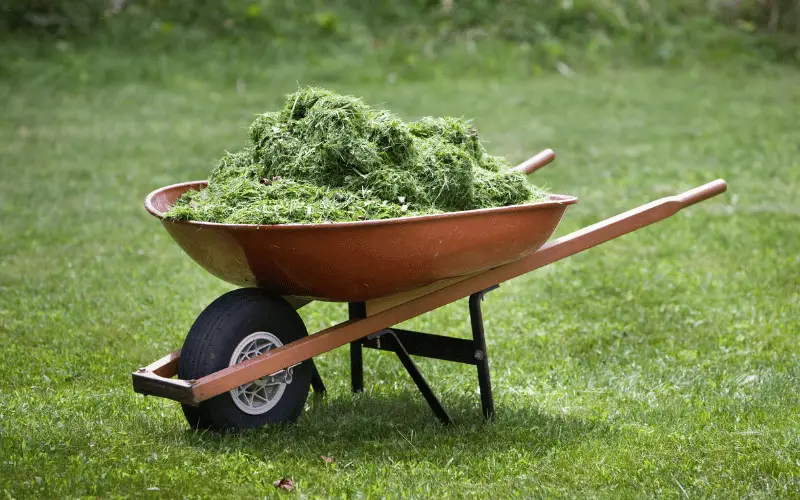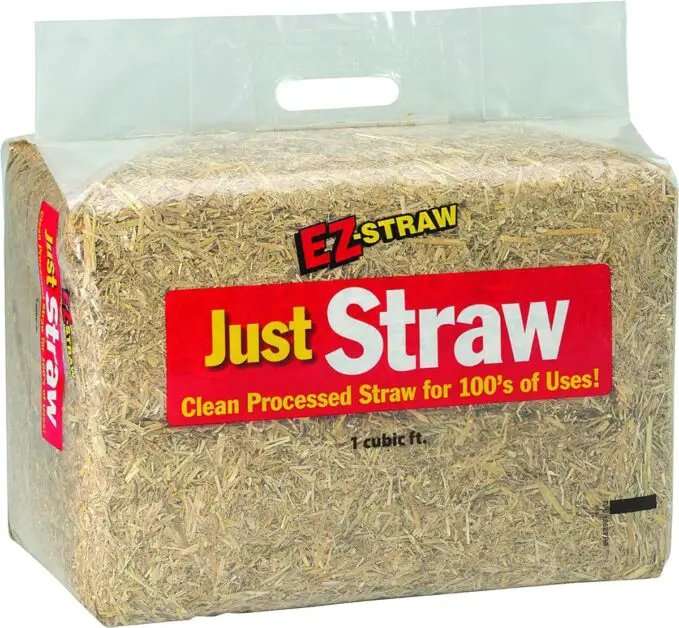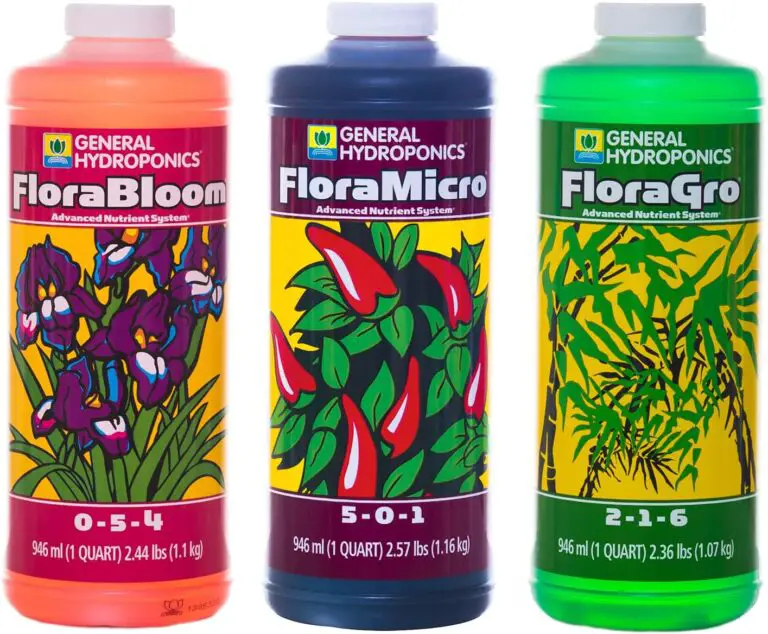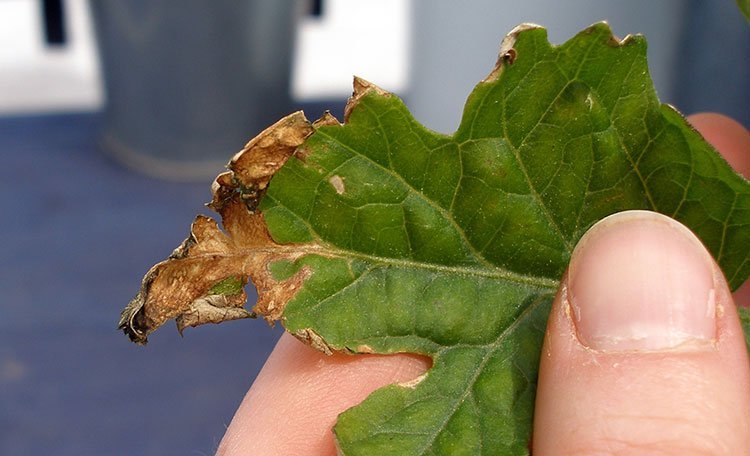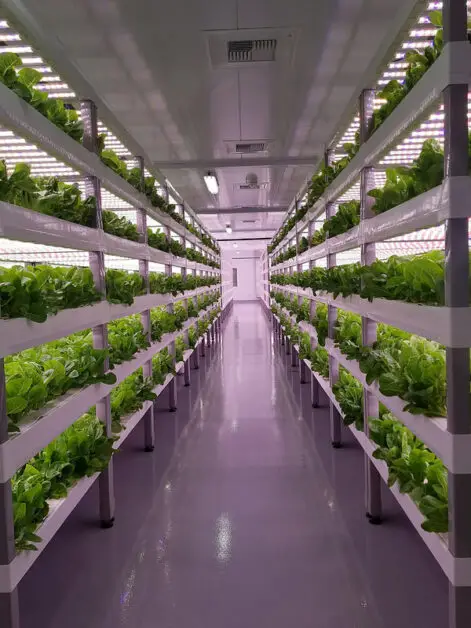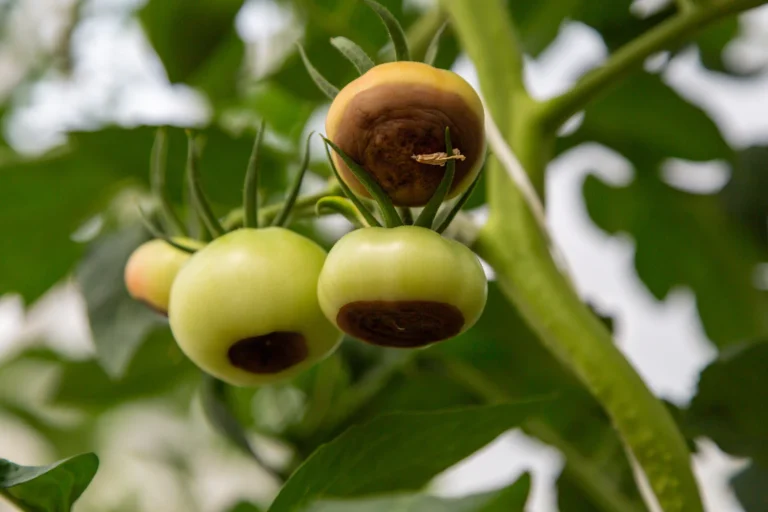How to Use Grass Clippings as a Natural and Free Mulch
Did you know that your freshly cut grass can do more than just sit in a pile? Using grass clippings as natural mulch is not only a fantastic way to recycle yard waste, but it also provides a wealth of benefits for your garden. This eco-friendly practice helps retain soil moisture, suppresses weeds, and adds valuable nutrients back into the soil. Imagine transforming your regular lawn maintenance into a powerful tool for healthier, more vibrant plants—all for free! In this guide, we’ll show you step-by-step how to use grass clippings as mulch effectively, ensuring you get the most out of every mow. Embrace this simple, green solution and give your garden the boost it deserves.
Table of Contents
Benefits of Using Grass Clippings as Mulch
Grass clippings can be a valuable resource for gardeners, as they offer numerous benefits when used as mulch.
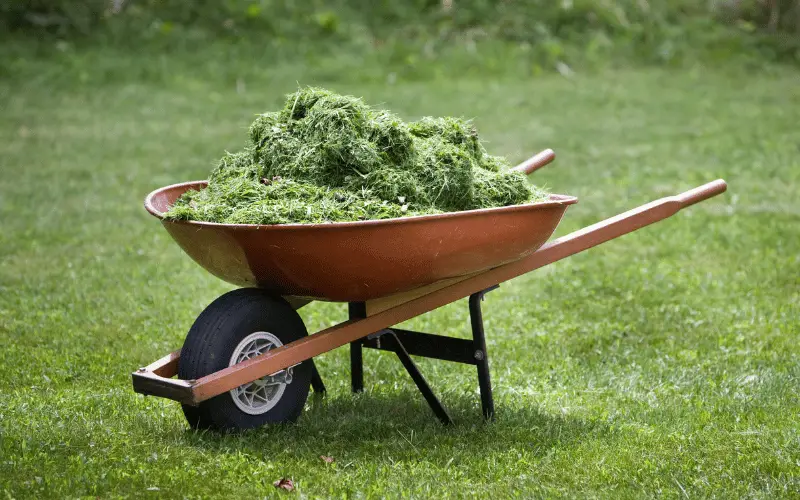
- Moisture Retention: Grass clippings create a natural barrier that prevents soil evaporation, keeping the soil moist for longer periods, especially during hot and dry weather.
- Weed Suppression: When used as mulch, grass clippings inhibit weed growth by blocking sunlight and preventing weed seeds from germinating.
- Nutrient Contribution: As grass clippings decompose, they release essential nutrients (nitrogen, potassium, and phosphorus) into the soil, benefiting plant health and productivity.
In short, utilizing grass clippings as mulch can enhance soil moisture retention, suppress weed growth, and promote nutrient enrichment. By harnessing these benefits, gardeners can create a healthier and more vibrant garden environment.
Understanding the Nutritional Value of Grass Clippings
Grass clippings may seem like a simple waste product after mowing the lawn, but they actually hold significant nutritional value that can benefit your garden. These clippings are rich in nitrogen, a vital nutrient necessary for the healthy growth of plants.
- Nitrogen Synthesis: Grass clippings provide nitrogen, essential for chlorophyll and protein synthesis in plants.
- Potassium and Phosphorus: Grass clippings also contain smaller amounts of potassium and phosphorus, vital for root development, disease resistance, and flower/fruit production.
- Natural Fertilization: Regularly mulching with grass clippings enriches the soil with nutrients, promoting a healthier garden.
Choosing the Right Type of Grass Clippings for Mulching
Grass clippings can be an excellent choice for mulching, but it’s important to choose the right type of grass clippings to ensure optimal results. The key factor to consider is the type of grass you are using. Different grass species have varying nutritional compositions, and this can impact their effectiveness as mulch.
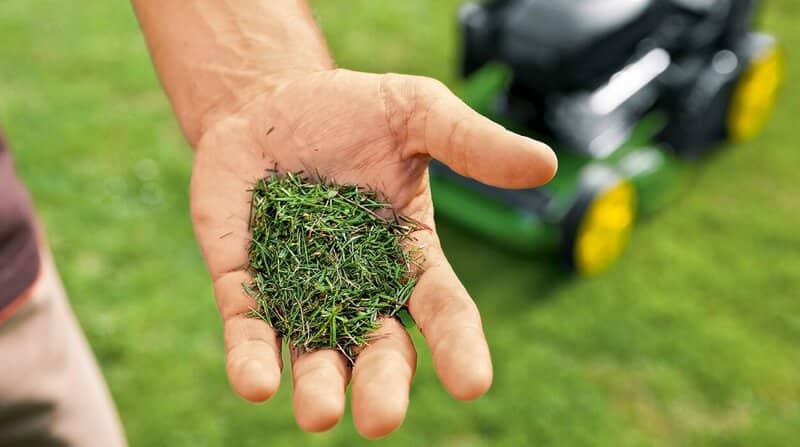
- Cool-Season Grasses: Kentucky bluegrass and fescue
- Higher nitrogen content
- Ideal for enriching soil
- Promotes healthy plant growth
- Warm-Season Grasses: Bermuda grass and zoysia grass
- Higher carbon content
- Slower to decompose
- Provides longer-lasting mulch
- Avoid Chemical Treatments:
- Ensure grass clippings are free from herbicides, pesticides, and other chemicals
- Chemical-treated clippings can harm plants
- If unsure about the history of your grass clippings, avoid using them or compost them for future use
By carefully choosing the right type of grass clippings for mulching, you can maximize the benefits and create a healthy environment for your plants to thrive. In the next section, we will discuss how to properly prepare grass clippings for mulching, ensuring that they’re ready to deliver the nutrients your garden needs.
Preparing the Grass Clippings for Mulching
When it comes to preparing grass clippings for mulching, there are a few important steps to follow that can help ensure optimal results.
- Timely Collection: Gather grass clippings immediately after mowing to capture maximum nutrients.
- Drying Process: Allow the clippings to dry thoroughly before using them as mulch.
- Spread them in a thin layer on a tarp or flat surface.
- Turn them over periodically for even drying.
- Depending on weather conditions, drying may take 2 to 5 days.
By ensuring that the grass clippings are completely dry, you can prevent potential issues and improve the effectiveness of the mulch.
The table explain about preparing grass clippings for mulching:
| Preparing Grass Clippings for Mulching | Steps |
|---|---|
| 1. Cut Grass at the Right Height | – Mow the lawn at the recommended height, typically 2.5 to 3 inches. |
| 2. Dry Grass Clippings Thoroughly | – Allow freshly cut grass clippings to dry in the sun for a day or two. |
| 3. Avoid Clumping and Matting | – Spread out the clippings to prevent clumping and matting. |
| 4. Mix with Brown Materials | – Combine grass clippings with brown materials like dry leaves or straw. |
| 5. Avoid Chemically Treated Lawns | – Avoid using clippings from chemically treated or herbicide-treated lawns. |
| 6. Remove Weed-Infested Clippings | – Exclude clippings with weed seeds or visible weed infestations. |
| 7. Allow Clippings to Cool | – If the grass was mowed in the heat, allow clippings to cool before applying. |
| 8. Apply in Thin Layers | – Apply grass clippings in thin layers to prevent overheating and matting. |
| 9. Turn and Mix Periodically | – Turn and mix the mulch periodically to avoid compaction and improve aeration. |
| 10. Compost Excess Clippings | – If you have excess clippings, consider composting them for future use. |
Mixing EZ Straw Clean Processed Straw with my grass clippings has been a game-changer for my lawn care routine. The combination spreads effortlessly, creating a neat and effective mulch layer. Not only does it give my lawn a polished look, but it also works wonders in suppressing weeds and preserving moisture, resulting in a healthier turf. While I’ve noticed the need for occasional reapplication, particularly in areas with heavy foot traffic, it’s a small price to pay for the impressive results. Overall, EZ Straw has become my go-to solution for maintaining a lush and eco-friendly lawn.
✅ Clean processed straw minimizes mess and debris
✅ Provides effective weed control and moisture retention
✅ Biodegradable material is environmentally friendly
❌ Packaging could be more durable for storage purposes
Proper Application Techniques for Grass Clipping Mulch
Proper application techniques are essential when using grass clippings as mulch to ensure optimal results in your garden. Here are some guidelines to follow when applying grass clipping mulch:
1. Spread a thin layer: It is important not to apply grass clippings too thickly as it can create a suffocating mat that prevents water and nutrients from reaching the soil. Instead, spread a thin layer of about 1 to 2 inches across the desired area. This allows for proper air circulation and minimizes the risk of fungal growth.
2. Avoid clumping: To prevent the grass clippings from clumping together, it is crucial to scatter them evenly over the surface. Use a rake or gloved hands to gently disperse the clippings in a thin and uniform manner. This ensures that all areas receive the benefits of the mulch, such as moisture retention and weed suppression.
3. Maintain moisture balance: Grass clippings can retain moisture, which is advantageous for plants, but they can also become waterlogged and create a breeding ground for pests and disease. It is important to periodically check the moisture levels under the mulch and adjust watering accordingly. If the soil feels excessively wet, reduce watering to prevent over-saturation.
4. Avoid mulching too close to plants: When applying grass clippings as mulch, be cautious not to pile it directly against the stems or trunks of plants. This can create a moist environment that encourages rot and can attract pests. Leave a small gap around the base of plants to allow for airflow and prevent potential damage.
By following these proper application techniques, you can make the most of your grass clippings as mulch and enjoy the numerous benefits it provides to your garden. Remember, mulching is not a one-time task, and regular maintenance is essential to ensure the health and vitality of your plants.
Mulching Flower Beds with Grass Clippings
Proper mulching of flower beds is essential for maintaining their health and vitality. When it comes to choosing the right material for mulching, grass clippings can be a valuable and cost-effective option. Grass clippings are rich in nitrogen, an essential nutrient for plant growth, making them a beneficial addition to flower beds.
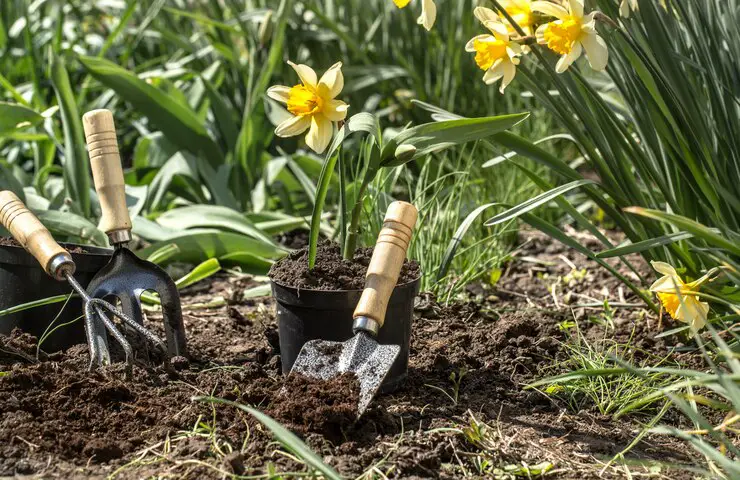
Grass clippings release nitrogen, potassium, and phosphorus as they decompose
These nutrients are vital for plant development
Enhances overall health and productivity of flower beds
Promotes vibrant blooms and lush foliage
Helps retain soil moisture, reducing the need for frequent watering
Acts as a protective layer to prevent evaporation
Inhibits weed growth, reducing competition for water and nutrients
Organic mulch breaks down over time, adding organic matter to the soil
Improves soil structure and fertility
Ensure grass clippings are dry before use
Spread evenly around the flower bed
Avoid thick layers to prevent suffocating plants
Following proper application techniques maximizes benefits
Enhances growth and beauty of flower beds
By following these proper application techniques, you can reap the benefits of using grass clippings as mulch to optimize the growth and beauty of your flower beds.
Using Grass Clippings as Mulch for Vegetable Gardens
When it comes to mulching vegetable gardens, using grass clippings can be a cost-effective and environmentally friendly option. Grass clippings are readily available and can provide numerous benefits for your plants.
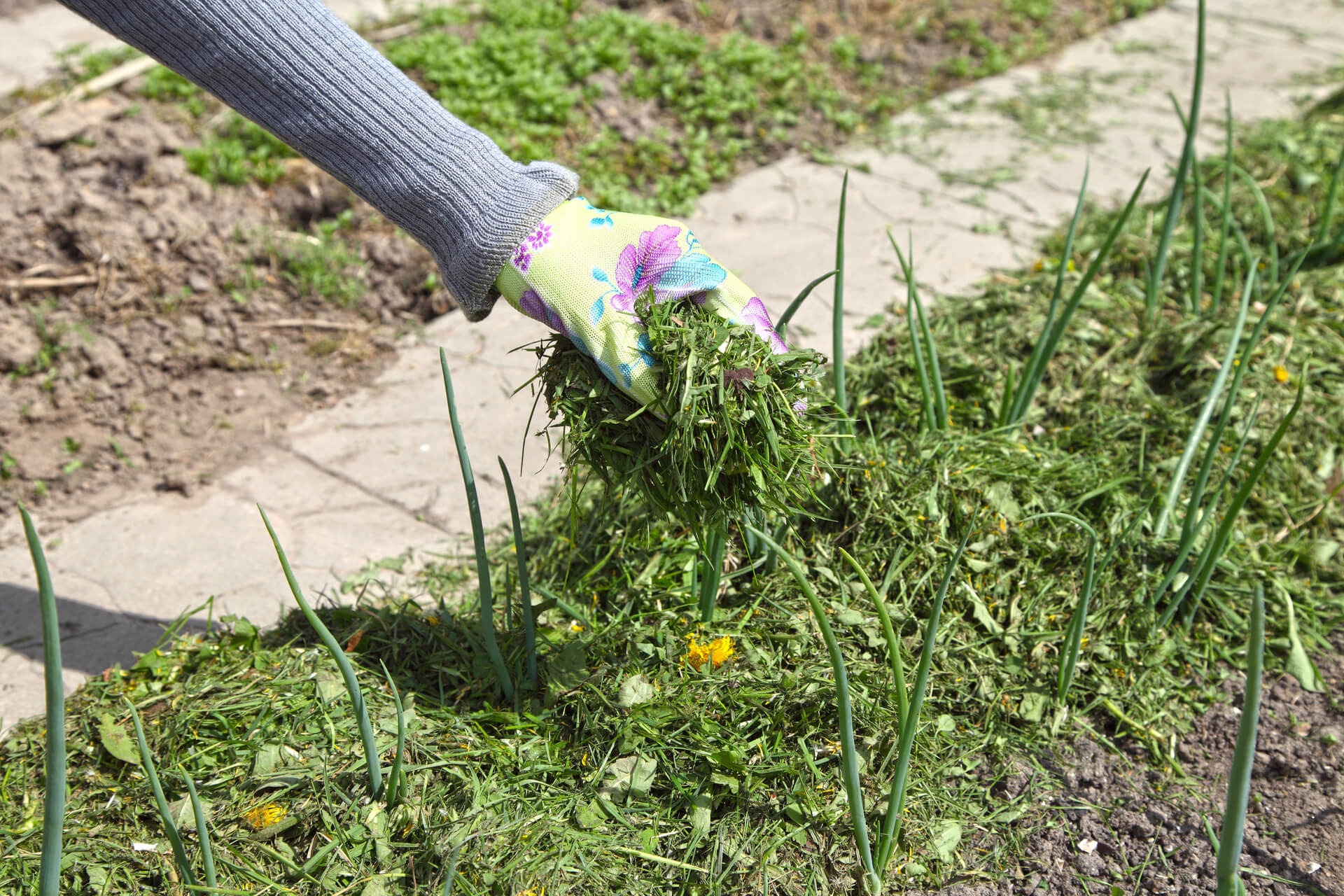
- Moisture Retention:
- Grass clippings create a protective layer on the soil surface, reducing evaporation and preventing moisture loss.
- Particularly beneficial during hot summer months when water evaporates quickly from the soil.
- Helps maintain consistent hydration for vegetables, promoting healthy growth.
- Weed Suppression:
- Thick layers of grass clippings smother weed growth by blocking sunlight and inhibiting weed seed germination.
- Reduces competition for nutrients and resources among vegetable plants.
- Organic Matter Contribution:
- As grass clippings break down, they enrich the soil with valuable organic matter.
- Improves soil structure and fertility.
- Supports the growth of beneficial microorganisms.
- Sustainability:
- Using grass clippings as mulch is a practical and eco-friendly choice.
- Helps achieve healthier and more abundant vegetable harvests.
In the next section, we will explore how to choose the right type of grass clippings for mulching to ensure the health and safety of your vegetable plants.
Mulching Around Trees and Shrubs with Grass Clippings
Mulching around trees and shrubs with grass clippings is an effective and eco-friendly way to enhance the health and vitality of your landscape.

- Nutritional Benefits:
- High nitrogen content promotes healthy plant growth
- Improves overall soil quality
- Moisture Conservation:
- Reduces evaporation, keeping the root zone moist
- Decreases the need for frequent watering
- Weed Suppression:
- Thick layer acts as a physical barrier against weed germination
- Reduces competition for nutrients and water
- Lowers the need for manual weeding or herbicides
- Application Tips:
- Rake together a thick layer of grass clippings
- Remove weed seeds or unwanted plant material
- Spread clippings around the base of trees and shrubs
- Avoid piling clippings too close to the trunk or stems to prevent rot or disease
- Aim for a mulch layer of 2-4 inches
- Optimal Use:
- Provides insulation, weed suppression, and moisture retention
- Ensures healthy growth without suffocating plants
Remember to leave a small gap around the tree or shrub trunk to prevent moisture buildup and discourage pests and diseases.
Mulching Paths and Walkways with Grass Clippings
Mulching paths and walkways with grass clippings is an excellent way to utilize this natural resource while providing a practical and visually appealing solution. The use of grass clippings as mulch reduces waste and returns valuable nutrients back to the soil. Additionally, it serves as a cost-effective alternative to traditional mulch materials.
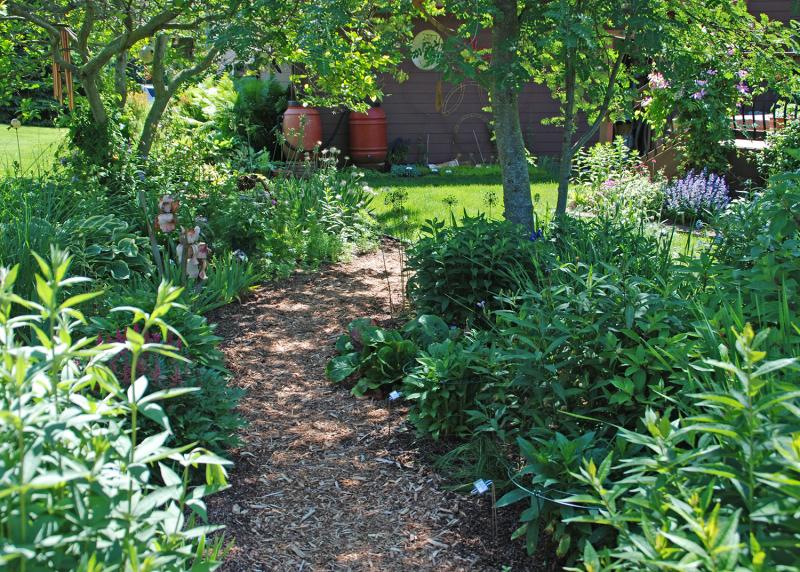
- Preparation:
- Ensure the grass clippings are pesticide and herbicide-free to avoid harming surrounding plants.
- Let the clippings dry out for a day or two before spreading them.
- Application:
- Spread the clippings evenly on the desired area.
- Aim for a layer thickness of around 1-2 inches.
- Avoid Compaction:
- Refrain from walking on the mulched paths immediately after application to prevent compacting the grass clippings.
By following these steps, you can create an attractive and environmentally friendly mulch for your paths and walkways.
Maintaining the Mulch Layer for Optimal Results
Proper maintenance of the mulch layer is essential to ensure optimal results in your garden. Mulching not only helps to retain moisture, suppress weeds, and regulate soil temperature, but it also improves the overall health and fertility of the soil. To get the most out of your mulch, here are some key tips to keep in mind.
- Monitor Mulch Depth:
- Regularly check the depth of your mulch layer
- Aim for 2-3 inches deep; do not exceed 4 inches
- Prevent excessive moisture retention and root rot
- Replenish Mulch Regularly:
- Mulch breaks down and adds organic matter to the soil
- Top up the mulch layer once or twice a year
- Fresh grass clippings are a great nitrogen source, promoting healthy growth
- Maintain Even Distribution:
- Ensure mulch does not accumulate around stems or trunks
- Avoid creating damp environments that attract pests and diseases
- Gently rake or fluff mulch to break up clumps and maintain an even layer
- Weed Control:
- Periodically check for weeds that may penetrate the mulch
- Remove weeds promptly to prevent competition with plants
By following these maintenance practices, you will ensure that your mulch layer continues to serve its purpose effectively in terms of moisture retention, weed suppression, and soil improvement. In the next section, we will explore common mistakes to avoid when using grass clippings as mulch.
Avoiding Common Mistakes when Using Grass Clippings as Mulch
When it comes to mulching with grass clippings, there are a few common mistakes that gardeners should be aware of in order to achieve optimal results. By avoiding these mistakes, you can ensure that your garden benefits from the many advantages of using grass clippings as mulch.
Use grass clippings only from lawns that haven’t been treated with herbicides or pesticides.
Chemical residues can harm plants and the environment.
Apply a thin layer (about 1-2 inches) of grass clippings around plants.
Avoid thick layers that can mat together and block oxygen and moisture.
Proper aeration ensures healthy soil and plant roots.
By being aware of these common mistakes and taking the necessary precautions, gardeners can harness the benefits of using grass clippings as mulch, promoting the overall health of their plants and contributing to an eco-friendly gardening practice. Remember, proper usage and application of grass clippings can lead to beautiful, thriving gardens that flourish throughout the growing season.
The table explains about the avoiding common mistakes with grass clipping mulch
| Avoiding Common Mistakes with Grass Clipping Mulch | Mistake | Prevention Tips |
|---|---|---|
| Thick Mulch Layers | – Mistake: Applying thick layers of grass clippings. | – Prevention: Spread a thin layer to prevent matting and improve airflow. |
| – Turn and Mix: Regularly turn and mix the clippings to avoid compaction. | ||
| Freshly Cut Grass | – Mistake: Using freshly cut, wet grass as mulch. | – Prevention: Allow grass to dry before using to prevent matting and odor. |
| – Mix with Dry Material: Mix with dry materials to improve aeration. | ||
| Application Around Plants | – Mistake: Piling grass too close to plant stems. | – Prevention: Leave a gap around plants to prevent rot and heat buildup. |
| – Create Mulch Basins: Form basins around plants to retain water. | ||
| Seed-Head Contamination | – Mistake: Using clippings with weed seeds or disease. | – Prevention: Only use clippings from a healthy, weed-free lawn. |
| – Compost Weed-Infested Clippings: Compost weed-containing clippings. | ||
| Chemical Contamination | – Mistake: Using clippings from chemically treated lawns. | – Prevention: Avoid using clippings from lawns treated with herbicides. |
| – Compost Treated Clippings: Compost chemically treated clippings. | ||
| Neglecting to Dry Clippings | – Mistake: Allowing grass clippings to mat when wet. | – Prevention: Dry clippings thoroughly before applying as mulch. |
| – Turn and Fluff: Turn and fluff mulch regularly to avoid matting. | ||
| Incorporating Diseased Material | – Mistake: Using clippings from diseased lawns. | – Prevention: Avoid using clippings from lawns with diseases or fungi. |
| – Proper Disposal: Dispose of diseased clippings separately. |
Composting Grass Clippings for Future Mulching
When it comes to organic gardening, composting grass clippings can be a valuable practice for future mulching. Not only does it provide an environmentally friendly way to dispose of yard waste, but it also creates a nutrient-rich compost that can enhance the health and vitality of your plants.
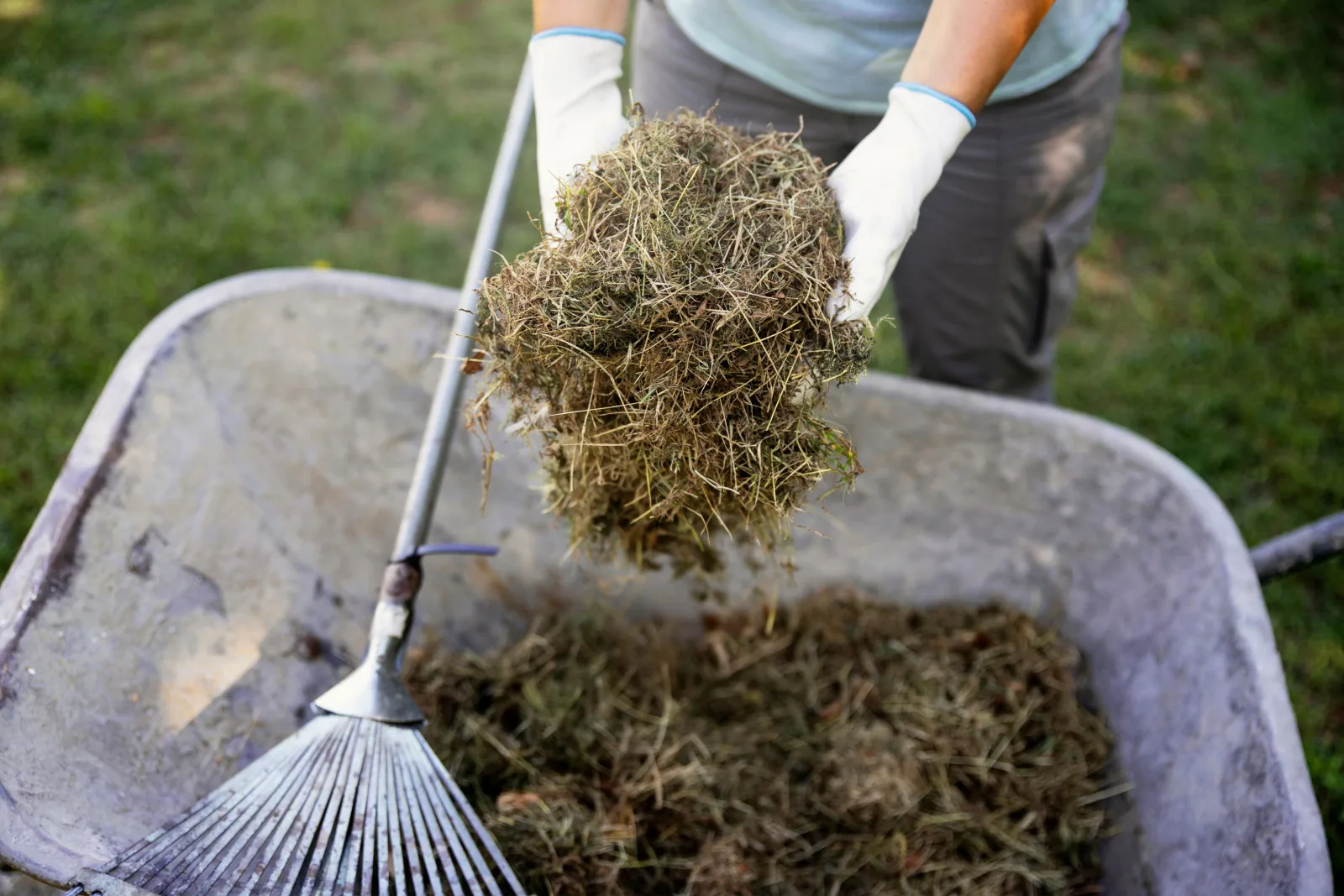
- Chemical-Free Clippings:
- Collect grass clippings free from pesticides, herbicides, and other chemicals
- Prevents disruption of compost balance and plant harm
- Balanced Mix:
- Aim for 25-50% grass clippings
- Mix with 50-75% brown materials (dried leaves, straw, shredded newspaper)
- Maintains moisture level, prevents odors, and aids decomposition
- Layering and Turning:
- Use a compost bin or pile
- Layer grass clippings with other materials
- Turn the pile regularly to aerate and speed up decomposition
- Compost Ready:
- Within a few months, the mixture will transform into dark, crumbly compost
- Use as mulch in your garden
Having put the VIVOSUN Tumbling Composter to the test with my grass clippings, I’m thrilled with the results. Its tumbling design has simplified the process of mixing and composting the clippings, leading to faster decomposition and nutrient-rich compost. The dual compartments have been invaluable, allowing me to keep composting even while one side matures. Though assembly was a bit tricky, the sturdy build and generous capacity have made it a worthwhile addition to my gardening routine.
- Efficient tumbling design for easy mixing and aeration
- Dual compartments for continuous composting
- Sturdy construction for durability
- Large capacity to handle a significant amount of compost
- Assembly can be challenging for some users
- May require occasional maintenance to ensure smooth operation
Alternative Uses for Grass Clippings in the Garden
Grass clippings, a common byproduct of lawn maintenance, have several alternative uses in the garden that can benefit both your plants and the environment.
- Composting:
- Incorporate grass clippings into your compost pile.
- Grass is rich in nitrogen, which speeds up decomposition.
- Mix clippings with other organic materials (leaves, shredded newspaper) for a balanced carbon-nitrogen ratio.
- Natural Mulch:
- Use grass clippings as mulch around plants.
- Benefits include weed suppression, moisture conservation, and soil temperature regulation.
- Apply a thin layer to avoid matting and allow nutrients to release into the soil.
By exploring these alternative uses for grass clippings in the garden, you can maximize the benefits of your lawn maintenance and create a more sustainable gardening practice. Experiment with incorporating grass clippings into your compost and using them as mulch, and observe the positive effects on your plants.
Environmental Impact of Using Grass Clippings as Mulch
Grass clippings, when used as mulch, can have a positive impact on the environment. Instead of disposing of clippings in landfills or burning them, recycling them as mulch can significantly reduce waste and carbon emissions.

- Nitrogen-Rich Clippings:
- Grass clippings contain high levels of nitrogen, vital for plant health and soil fertility
- Returning clippings to the soil reduces the need for synthetic fertilizers
- Environmental Impact:
- Minimizes chemical runoff into waterways by reducing fertilizer use
- Protects local ecosystems from pollution
- Weed Suppression:
- Acts as a natural weed suppressant, reducing the need for herbicides
- Preserves biodiversity of pollinators, insects, and beneficial organisms
- Moisture Retention:
- Improves soil moisture retention, reducing the need for supplemental irrigation
- Significant in regions facing water scarcity or drought conditions
Overall, incorporating grass clippings as mulch not only benefits the garden but also contributes to a more sustainable and eco-friendly gardening practice.
For more information watch the video:
FAQ
Can using grass clippings as mulch harm the environment?
No, using grass clippings as mulch is actually beneficial for the environment. It reduces waste, conserves water, and enriches the soil with nutrients.
Are there any specific types of grass clippings that should not be used as mulch?
Yes, it is recommended to avoid using grass clippings from lawns treated with herbicides or pesticides, as these chemicals can negatively impact plants and the environment.
How should I prepare grass clippings before using them as mulch?
It is important to let the grass clippings dry out before using them as mulch. Spread them out in a thin layer and allow them to dry for a day or two to prevent mold growth.
Can I use grass clippings as mulch in my vegetable garden?
Yes, grass clippings can be used as mulch in vegetable gardens. However, make sure that the grass has not been treated with any chemicals that could be harmful to edible plants.
Is it necessary to maintain the mulch layer of grass clippings regularly?
Yes, it is important to regularly maintain the mulch layer by replenishing it when it starts to break down. This will ensure that the soil retains moisture and that weeds are suppressed.
Can grass clippings be composted for future use as mulch?
Yes, grass clippings can be composted to create nutrient-rich compost that can be used as mulch in the future. Make sure to mix them with other organic materials to create a balanced compost pile.
Are there any alternative uses for grass clippings in the garden?
Yes, besides using them as mulch, grass clippings can also be used as a natural fertilizer when mixed with water or added to compost bins to accelerate the decomposition process.
Will using grass clippings as mulch attract pests or rodents?
No, as long as the grass clippings are properly dried out and applied in a thin layer, they should not attract pests or rodents.

Studied Agricultural Engineering-Plant Protection at University of California, Davis.
Head of Content writing team at Southelmontehydroponics.com

